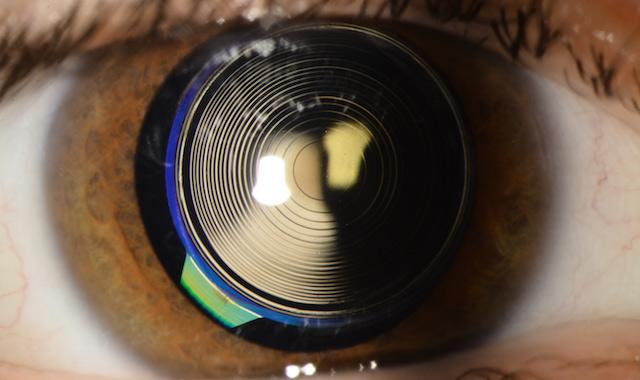Should I have a multifocal intraocular lens implant for my cataract surgery?
This is a common question I get asked by many patients who come to see me privately for cataract surgery.
The option of multifocal intraocular lens implantation for cataract surgery is not yet available on the NHS. And sometimes patients come to see me specifically to discuss this option.
In routine cataract surgery, we generally implant a mono-focal intraocular lens. This means that the lens implant is fixed to focus on one distance. In general, most patients prefer to be fixed for the distance. This helps them focus on the environment around them – this is what we concentrate on most of the time.
Patients with mono-focal intraocular lens implants fixed for distance vision are then required to use additional reading glasses to focus on near objects such as books or smartphones.
The very large majority of patients with mono-focal intraocular lens implants are very happy with this arrangement. The high success rate of cataract surgery is based mostly on this type of intraocular lens. It is the most commonly used and best validated intraocular lens type at present.
Multifocal intraocular lenses were designed to go one better than mono-focal intraocular lenses. Their design allows patients to see at multiple distances and theoretically allows the patient to be spectacle free after cataract surgery.
That means this type of intraocular lens can focus at distance and near. This enables patients to see the world around them in focus and also be able to see writing in a book or on a mobile phone.
So far, so good.
So why doesn’t everyone have a multifocal intraocular lens implant with their cataract surgery?
Firstly, multifocal intraocular lens implants cost more than standard mono-focal intraocular lenses. We can provide details of the extra costs of each type of multifocal intraocular lens available if you call us on 07919 895 448.
Unfortunately, there are several functional compromises with multifocal intraocular lenses too.
In order to be able to focus on multiple distances, the intraocular lens has to be designed to have multiple focusing points.
Some lenses are designed to have multiple concentric rings with several focusing points.
Other intraocular lenses have different sections for focusing. They are much like bifocal glasses that have a section at the bottom for reading.
The compromise here is that each focusing point is not quite as clear. A person with a multifocal intraocular lens may have slightly reduced sharpness to their distance vision and slightly reduced sharpness to their reading near vision.
This is an accepted compromise for those patients who do not want the bother of reading glasses.
Some people do not like this compromise and prefer sharp distance vision and are happy to have reading glasses.
If you are a patient who has used varifocal glasses where one set of spectacles is used for distance and near vision, you may understand the compromises described here.
A small percentage of patients may have to accept having trouble with seeing light glare or haloes in dim light such as at night.
Patients who drive at night can describe haloes or glare around headlamps. This can cause problems such as not feeling safe to drive at night especially in unfamiliar surroundings. Therefore multifocal intraocular lens implants are probably not best suited to those patients who do a lot of nighttime driving.
Multifocal intraocular lens implants are also not best suited to patients who have other eye conditions. Those can be for example age-related macular degeneration or diabetic maculopathy.
This is because the slightly reduced sharpness seen in multifocal intraocular lenses is further worsened by patients who have sub-optimal functioning retina to start with.
Thus, I do not recommend multifocal intraocular lens implants in patients who have pre-existing macular conditions affecting their vision.
Multifocal intraocular lens implants generally work best if implanted in both eyes. The recommendation is both eyes have this type of implant. This increases the chances of being spectacle free after cataract surgery.
The last thing to mention is that using multifocal intraocular lens implants in cataract surgery only reduces your chance of you being spectacle free after your operation. There are patients who will still need reading glasses.
Patients should aware of this possibility. Otherwise they may be disappointed with the outcome of their cataract surgery.
Very occasionally, patients cannot tolerate some of the described compromises of multifocal intraocular lens implants. There is no choice but to undergo further surgery to remove them and replace them with a more standard mono-focal intraocular lens implant.
Every patient is different and every patient has different needs. If you are thinking of having cataract surgery and would like more information about whether multifocal intraocular lens implants are for you, please feel free to call me on 07919 895 448 and we can chat further about your particular needs.


![Five Facts about Toric Intra-ocular Lenses [Infographic]](https://jaheedkhan.co.uk/wp-content/uploads/2016/12/jk-toric-lenses-500x383.jpg)
